How to flat-water Loop
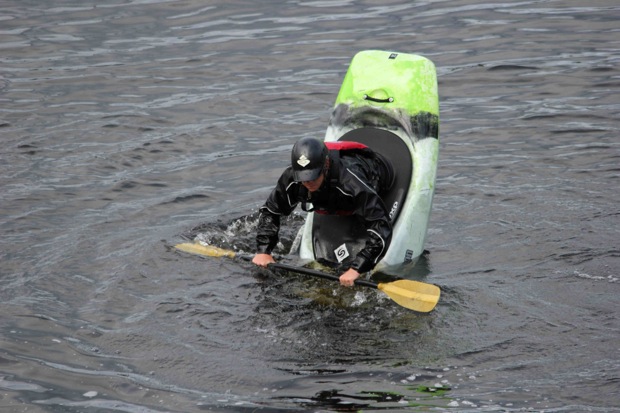
By: www.newriveracademy.org. There are many different ways that you can be taught how to flatwater loop. I find it easiest to think about learning the flatwater loop in 4 main steps. The double-pump to bowstall, the bounce, the throw, and the loop stroke. The first step is to learn the double pump. The double pump is a two stroke step where you take a forward stroke and then a back stroke while on edge. This will eventually lead to a bow stall.
After you have mastered the bow-stall, you must practice “bouncing”. I always compare bouncing compare to a buoy or a “bobber” out in the ocean. It is always moving up and down, rather than staying still. This also helps when you are learning your bow-stall because if you keep a little bit of a bounce going it is much easier to balance and stay in your stall.
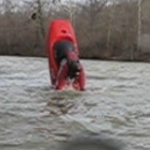 The bounce
The bounce
Next, you must figure out how to get your boat aerial. This is one of the hardest parts of learning the flatwater loop because you must learn to time your bounce to get the most air when you throw. The easiest way to learn how to time this is to count out your bounce. I like to go on the third bounce, so I would count “bounce, bounce, throw.”
Initiate the throw using your paddle, which should be in the water in front of you, helping to stabilize your bow-stall. Remember to keep your paddle well out in front of your boat. I like to have mine at least a foot away from my cockpit. This helps me maintain my balance more effectively. It helps if you think about your boat and body being like the legs on a tripod for a camera: The further apart the tripod legs are, the more stable the tripod is, and the less likely your camera is to fall.
As you initiate the throw, you want to pull the water towards you, release your paddle, bringing it up over your head, and then throw your paddle towards your toes bringing your body in contact with your front deck.
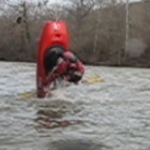 The throw
The throw
The biggest mistake that people make with the “throw” is that they start to throw too late. What happens if you throw to late is that you can’t get your paddle out of the water, and you fall on your face. This is because as you start your bounce, people feel themselves rising up from the water and go to throw, but leave their paddle in the water too long. This actually forces the boat/bounce back down into the water, and does not let your boat release, which is why you fall on your head.
To avoid this mistake, you want to start the throw by pulling the water towards you. Start your bounce by pulling your paddle up, not by pushing down, so that you are in position to throw as your boat is RISING.
The last step of the flatwater loop is that you need to finish your throw. As you go forward, you have to go back. Throwing towards your toes only brings your boat halfway around. You need to pull on the water to finish the rotation of the loop, allowing your boat to land upright.
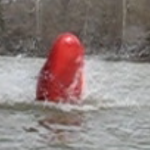 The loop stroke
The loop stroke
To pull on the water, take a full on back stroke using both paddle blades. This is also called a “loop stroke”. After throwing your paddle towards your toes, bring your paddle back towards your stern. Your body should move from having your chest in contact with your front deck, to having your back and your head touching the stern of your boat.
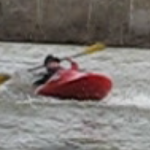 Land on your back deck
Land on your back deck
When you are beginning and learning how to loop, I never have people bring both blades back over your head, because it is an unfamiliar motion. I like to have beginners come up with one paddle blade, because it mimics the motion of a roll. This, however, twists your boat. You will land your loop, but you will rotate and twist slightly sideways, causing you to “shank” your landing.
Once you get comfortable pulling on one blade, try the full loop stroke. Try to hold the loop stroke as long as possible to force your loop around. Often when people land their loops, you will still see their body all the way back on the stern. It can be good to practice finishing your loop in this position to really emphasize the loop stroke. This also helps keep your boat straight on the landing.
Sometimes, you will be all the way back on your stern, looking at your bow up in the air. To force your bow back down and finish the loop without twisting, you may need to crunch or throw your body forwards, “sitting up.”
WHAT IS THE DEAL WITH AN OVERTHRUSTER?
If you have an overthruster, you may find it harder to hold the bowstall, but it will make your flatwater loops much more aerial, because it gives you more volume in the front of your boat, allowing for more “pop.”
More moves: Backdeck Roll, Bow Stall, Stern Stall, Flatwater Cartweel, Double Pump and a video.





